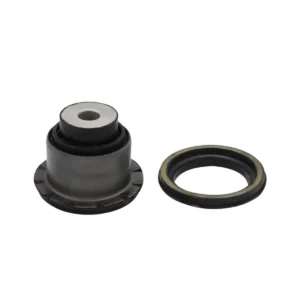You can contact us 24/7 +90 505 254 60 90
The best discounts this week
Every week you can find the best discounts here.
تعليق الكابينة، جلبة 9423100077
Kabin Takozu 9423100077
Cabin Suspension, Bushing 9423100077
Подвеска кабины, втулка 9423172112
Suspensão da cabine, buchas 9423172112
Suspensión cabina, buje 9423172112
In industrial environments, machinery plays a central role in production, assembly, and logistics. Yet even the most robust machines are prone to wear and failure over time. The key to preventing unexpected breakdowns and ensuring long-term performance lies in proper maintenance.
Maintenance isn’t just about fixing problems—it’s about preventing them. And when done right, it can drastically reduce downtime, increase efficiency, and even extend the life of your equipment by several years. Below, we share proven machine maintenance practices that industrial professionals rely on to keep operations running smoothly.
1. Develop a Preventive Maintenance Schedule
Preventive maintenance (PM) is the foundation of long-lasting equipment. Instead of reacting to breakdowns, PM focuses on regular, scheduled servicing to catch problems before they occur.
Start by creating a calendar-based or usage-based maintenance plan. For instance, every 500 hours of machine use, inspect belts and lubricate joints. Every 1000 hours, replace filters or recalibrate moving parts. Your plan should align with manufacturer guidelines, but also adapt to your operating conditions—such as temperature, dust exposure, or heavy use.
Use maintenance management software (CMMS) to automate reminders and track service logs. The more consistent your schedule, the fewer surprises you’ll face.
2. Train and Empower Your Staff
A well-trained team is one of your greatest maintenance assets. Operators and technicians who understand how machines work are more likely to notice unusual sounds, excessive vibration, overheating, or leaks.
Training should cover not only basic operation but also early fault detection and simple preventive actions (like checking fluid levels or tightening bolts). Encourage a culture of responsibility—where every worker takes pride in the machines they use.
Moreover, regular training updates ensure that new employees or temporary workers don’t skip crucial maintenance steps or misuse equipment.
3. Always Use High-Quality Spare Parts
Using cheap or incompatible parts might seem economical at first—but it usually leads to bigger problems. Non-standard parts can wear unevenly, damage neighboring components, or fail prematurely.
Always buy spare parts from verified suppliers or manufacturers with a reputation for quality. Whether it’s filters, bearings, seals, or sensors, using OEM-compliant parts ensures better performance and fewer returns. It’s also wise to stock frequently used spares, so you don’t lose time during critical repairs.
Think of it this way: a $10 part failure can lead to thousands in downtime or lost production.
4. Monitor Machine Performance in Real Time
Modern industrial facilities are increasingly embracing predictive maintenance powered by real-time monitoring tools. Sensors can detect changes in temperature, pressure, vibration, and speed—giving you valuable insight into the health of your machines.
By using diagnostic software and IoT-based sensors, you can catch early signs of trouble—like a slowly rising operating temperature or increasing vibration frequency. This allows you to take preventive action before a minor issue becomes a costly failure.
You don’t need a full smart factory setup to get started—even simple handheld devices and digital logbooks can significantly boost your awareness.
5. Prioritize Cleanliness and Environmental Control
Machines function best in clean, controlled environments. Dust, moisture, and chemical exposure can degrade moving parts, clog filters, and cause electrical shorts.
Make daily cleaning part of your routine. Keep floors swept, air filters clean, and ensure machines are free of residue or spills. In areas prone to high humidity or temperature changes, consider adding climate control systems or protective covers for sensitive equipment.
Clean machines are also easier to inspect and safer to operate.
6. Keep Comprehensive Maintenance Records
Documentation may not be exciting—but it’s essential. Every inspection, repair, or part replacement should be recorded. This data helps you identify patterns, spot recurring failures, and make better decisions about machine replacement or upgrades.
Maintaining records also improves transparency, especially in regulated industries. If an inspector or auditor asks for service history, you’ll have everything on file.
And remember, good records support better forecasting and budgeting for future maintenance needs.
Conclusion
Effective machine maintenance isn’t a luxury—it’s a strategic investment. With a structured approach to preventive care, skilled personnel, and quality parts, you can maximize uptime and protect your machinery from premature failure.
At SupplyGate, we understand how crucial reliable maintenance is. That’s why we provide not only a wide range of OEM-compliant components but also support tools to help you plan, monitor, and optimize your maintenance strategy. A well-maintained machine is a profitable machine—let’s keep yours running strong.
➡️ For quality parts and maintenance accessories, explore SupplyGate’s trusted supplier network.
FAQ:
Q: How often should preventive maintenance be performed?
A: It varies by machine and usage, but generally monthly or quarterly inspections are recommended.
Q: Can training reduce equipment failure?
A: Yes, trained staff can detect early issues and perform basic maintenance, reducing breakdowns.
Q: Why is documentation important in maintenance?
A: It helps track repairs, anticipate issues, and ensure compliance with safety standards.
Post Widget
Recent Posts
- نصائح أساسية لمعدات الماكينات الأساسية للنجاح الصناعي
- Conseils essentiels sur l’équipement des machines pour réussir dans l’industrie
- Wichtige Tipps zur Maschinenausstattung für den industriellen Erfolg
- Endüstriyel Başarı için Temel Makine Ekipman İpuçları
- Suggerimenti essenziali sulle attrezzature per macchinari per il successo industriale








You must be logged in to post a comment.